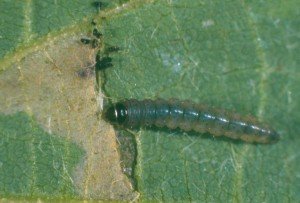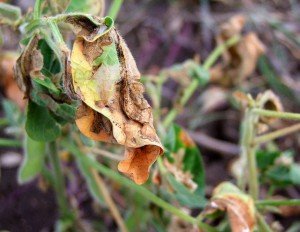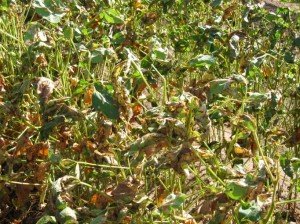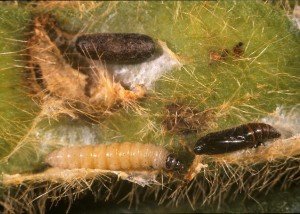Significant soybean moth activity has recently been reported in some Burdekin soybean crops. Soybean moth is a generally a minor soybean pest but significant outbreaks have been reported periodically in all soybean growing regions.
Feeding damage
Larvae feed mostly within the leaves, making distinctive pale leaf mines, and often distorting leaves.
Soybean moth is present in low numbers in most crops. However, in some seasons a population explosion can lead to huge numbers with over 1000’s of larvae per square meter. Such large populations can totally defoliate a crop.
Regular crop sampling will pick up the early stages of damaging populations, specifically the numerous pale small feeding mines per leaflet. Stressed sections of a crop are often more heavily infested.
Identification
Soybean moth larvae are small, reaching only 7 mm in length and are grey-green. Larva should not be confused with the much larger legume web-spinner (14 mm) which is a brighter green and webs leaves together, rather than mining within the leaf. Note that soybean moth larvae in the pre-pupal stage turn pale before pupating in folded leaves.
The emerging moths are small (6 mm long) with dark folded wings with a white band. The legume web-spinner moth is much larger (18 mm wingspan) and is brown with yellow markings.
Thresholds
Thresholds are based on percentage defoliation. In vegetative crops, 33% leaf tissue death (mining) is allowable before yields are compromised. However, the tolerable % falls to less than20% during pod-fill.
Control
Soybean moth are easily controlled with Abamectin at 300 mL/ha under permit 14288 (valid until 30 June 2017). Check that larvae are not in the pale pre-pupal stage as they will have stopped feeding and will not be controlled by the insecticide. Feeding larvae die inside the leaves and turn an opaque grey colour.
Article by Hugh Brier and Kate Charleston





